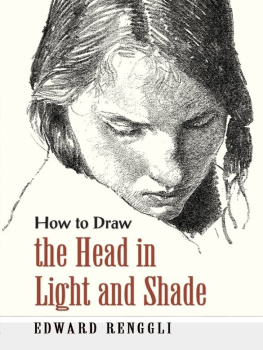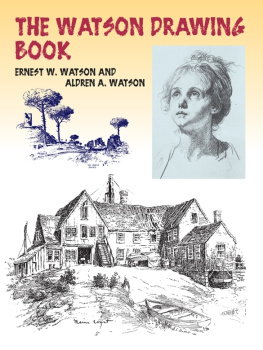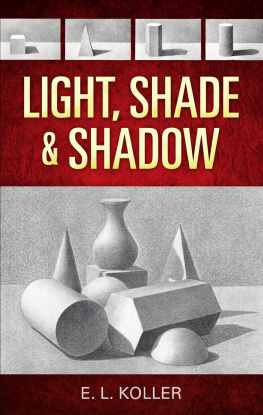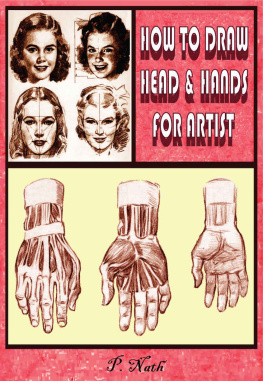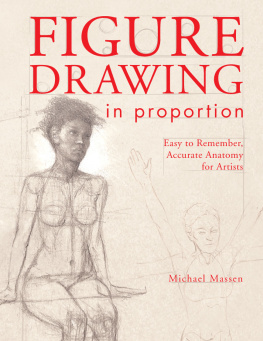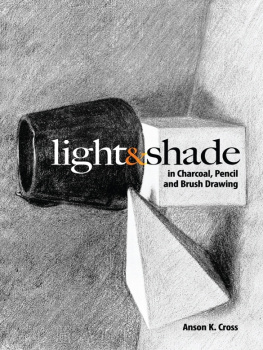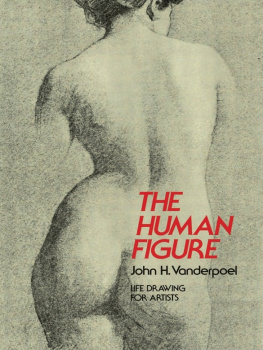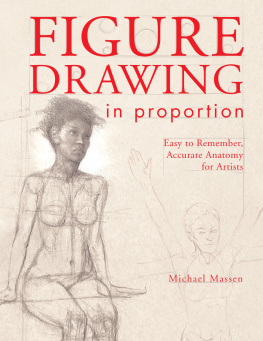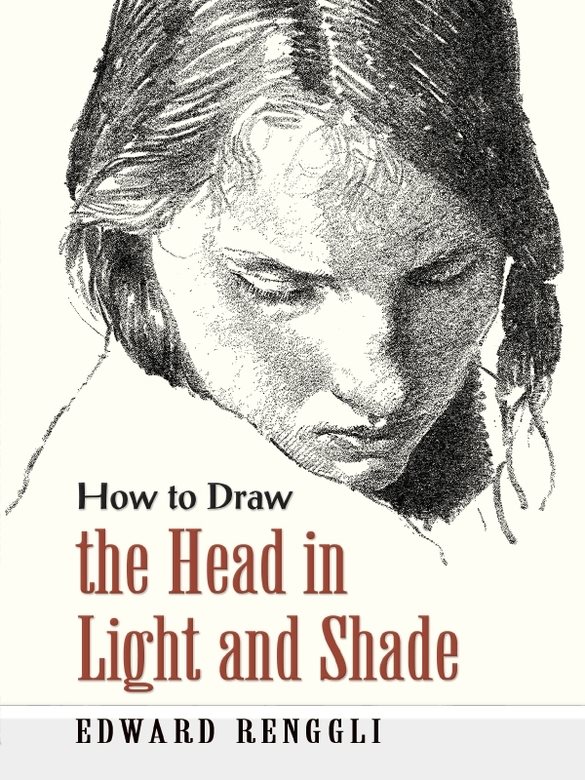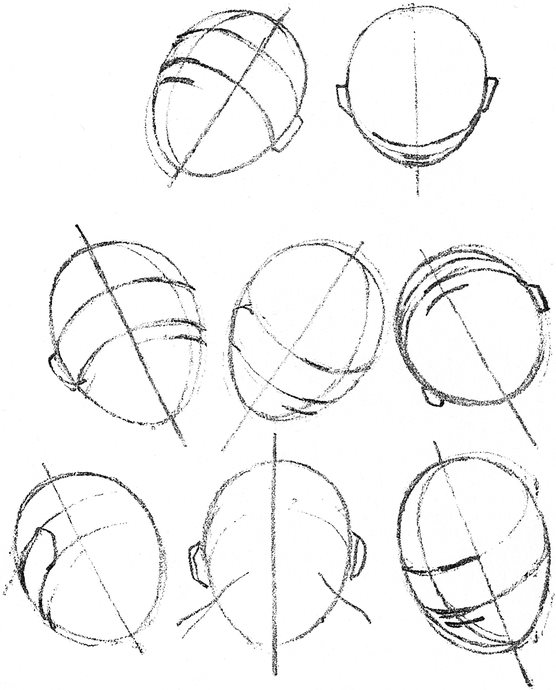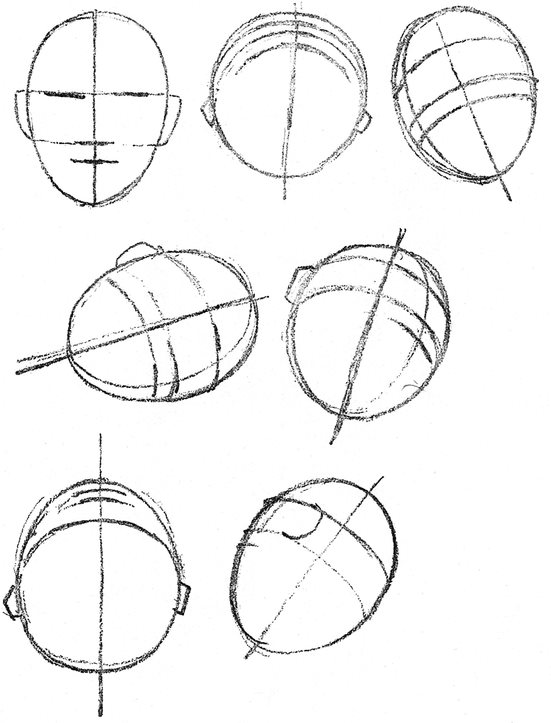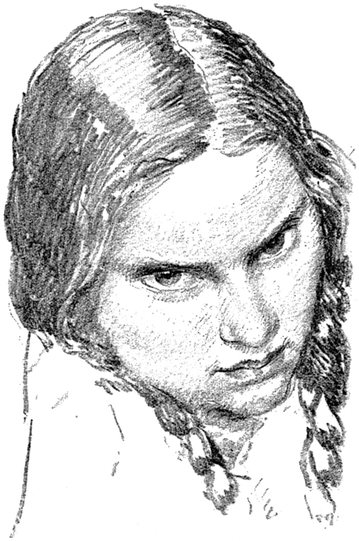CONSTRUCTION OF THE HEAD
IN THE constructive drawings here represented the heads are built on an oval. The basic idea is that the shape is rather like an egg, its greatest length divided first into three parts.
The cranium and forehead of an adult occupy the top half, the lower half divided again in the middle gives the base of the nose, while the mouth is situated above the middle of the distance between nose and chin.
When the head is turned or tilted the main axis that is drawn down the face follows the oval; the features follow the divisions as before mentioned.
In the heads of children these general proportions differ, the forehead is larger than in the case of adults, therefore this is no longer divided horizontally in the middle for the eyes, but lower down, according to age; the two remaining divisions comprising the nose and the mouth considerably less.
From infancy to youth and from youth to adult these variations of distance conform to their respective ages until old age again reverts back to shorter distances and proportions owing to loss of teeth and the straightening of the lower jaw.
In the male the features are more strongly marked, and therefore are more precise and definite than in the female.
HERE are presented a number of finished drawings where the element of beauty and youth appears. There is something in these young faces that is difficult to classify, both subtle and mystic. Some have the air of self consciousness, others a homely innocence, characters are delicately emphasized, bringing forth the differences of expression and child-like grace.
The first essentials of the drawings are explained by the few constructive lines as represented in the outline charts. First the heads must be of the right shape and size, the features neither too large nor too small. Proportions become instinctive and are only sensed as the head is turned in perspective, or in a so-called foreshortened position. Not only must the eyes, nose and mouth be studied but the treatment of the hair as well, whether arranged in rolls, braided, or with cork screw curls. In these charming drawings we sense the vague and elusive childish grace, the dark shade of shadowed eyes, delicious snub noses and sensitive mouths. But it will be noted that there is not the merriment and laughter of children, nothing boisterous or loud in the characters portrayed, and though we feel that the childrens types could be more merry or more joyous, we know that characters as well as moods of the sitter are dominated by the artist, whose temperament, as it were, throws a mantle of his or her personality over everything they do; by some this is called style, by others inspiration and genius.
The character of a childs face, to a great extent, is determined by the fullness of the fleshy parts, the bony structure being must less in evidence than in an adult. The material for the growth of the features is thus provided for.
The peculiarities of infancy and youth are, for example, the head is of a elongated form, the forehead full, the part containing the brain large, while the jaw bones and the other bones of the face are diminutive. The neck is small compared with the size of the head.
Compare these characteristics with children of more advanced age. The enlarged proportion of the face, in comparison to the head, is due to the expansion of the bony structure beneath. The growth of the teeth enlarges both the upper and lower jaw bones giving prominence to the cheek bones, and a squareness to the chin; lacking this advanced growth the lower part of the face takes on the fullness and the roundness of childhood.
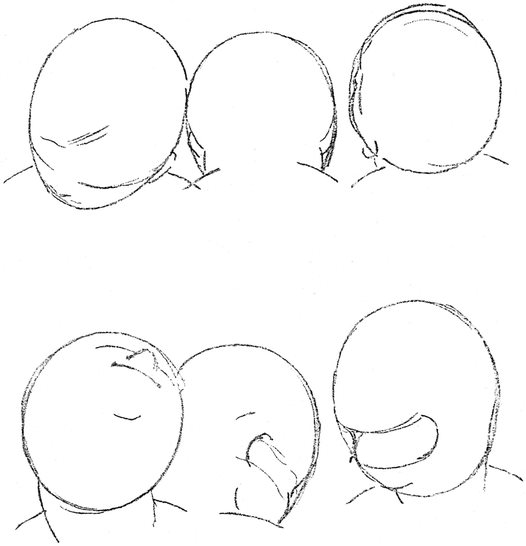
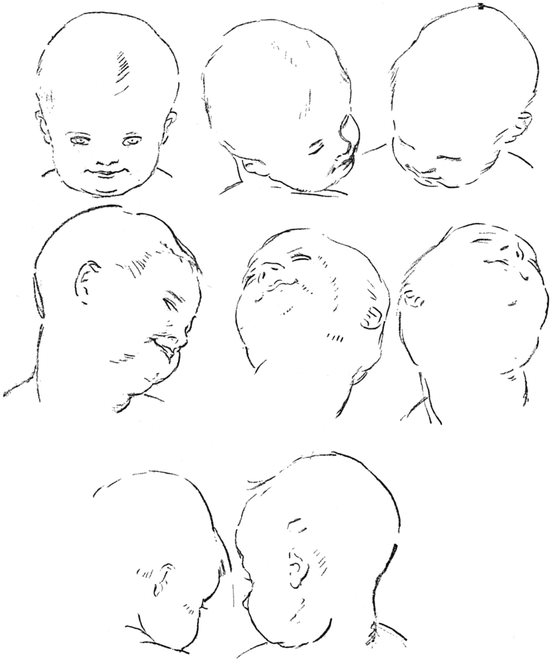
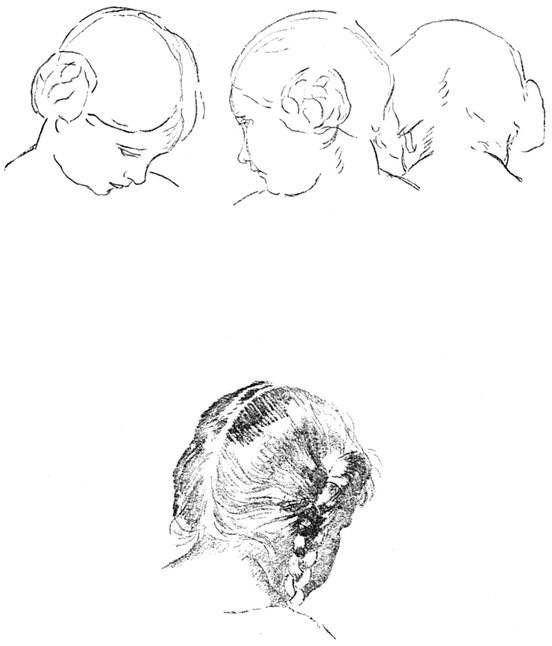

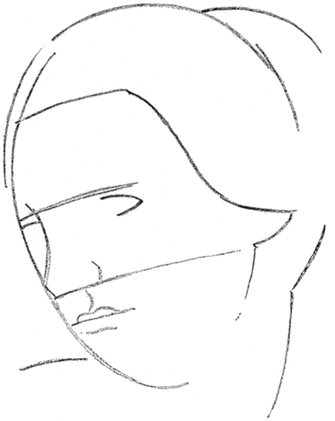
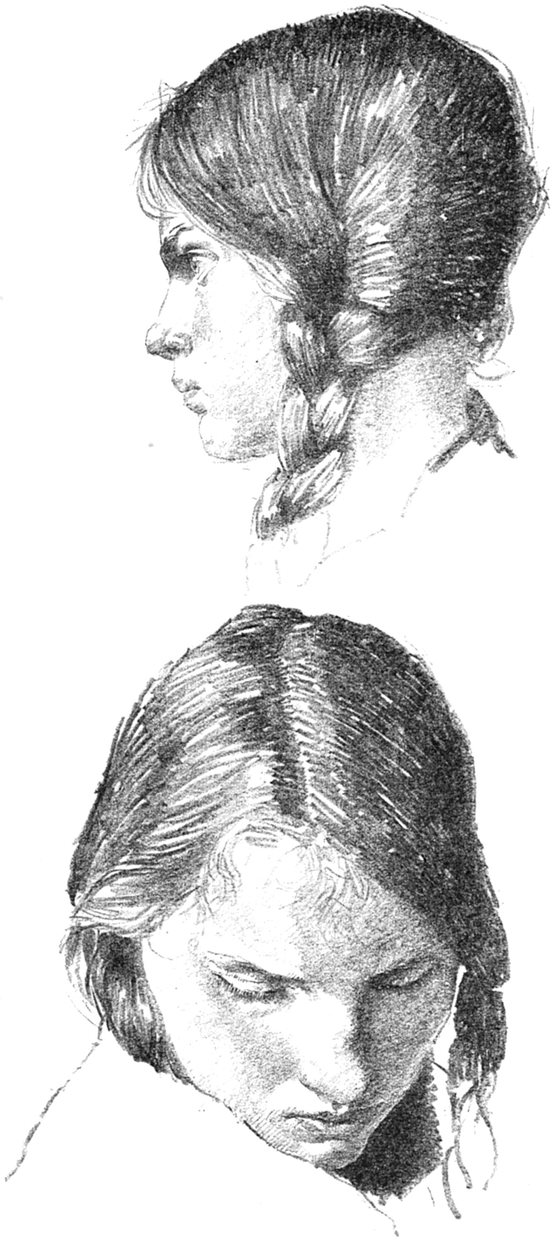


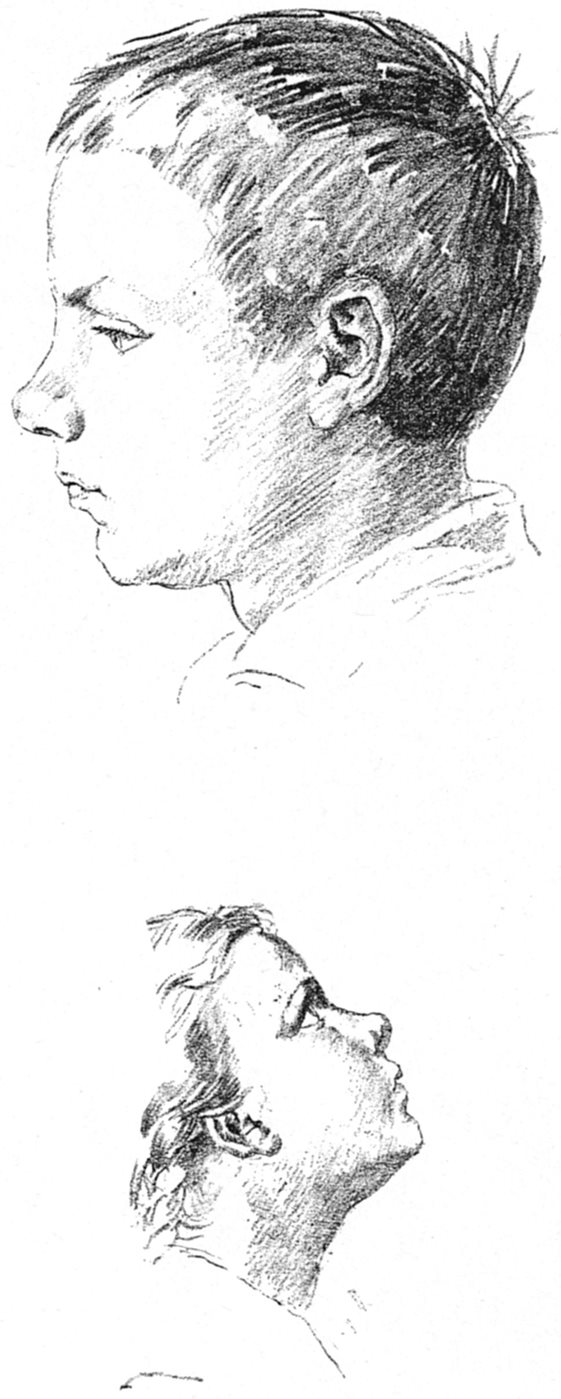
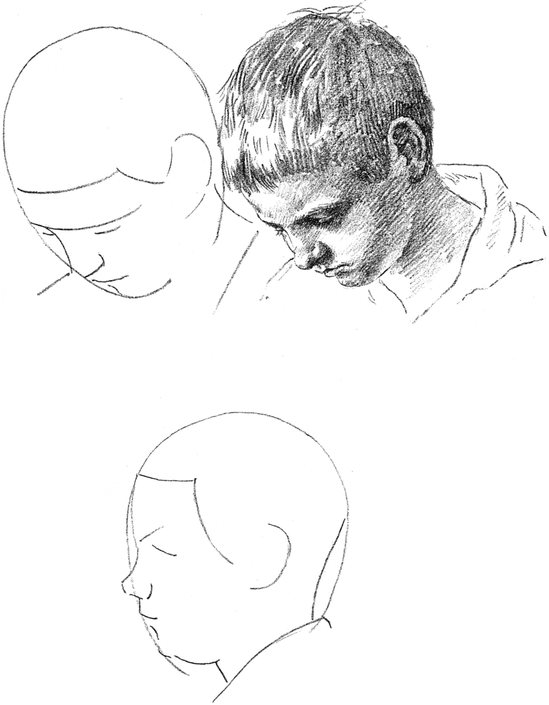
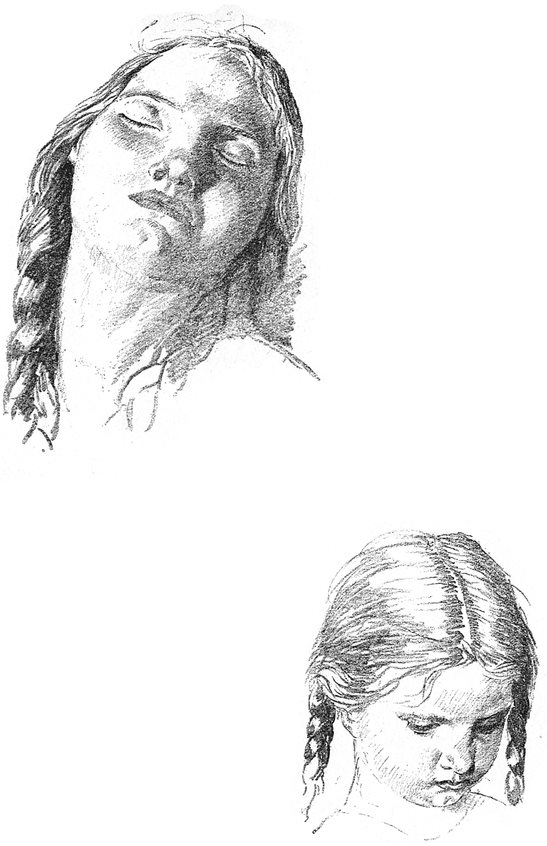
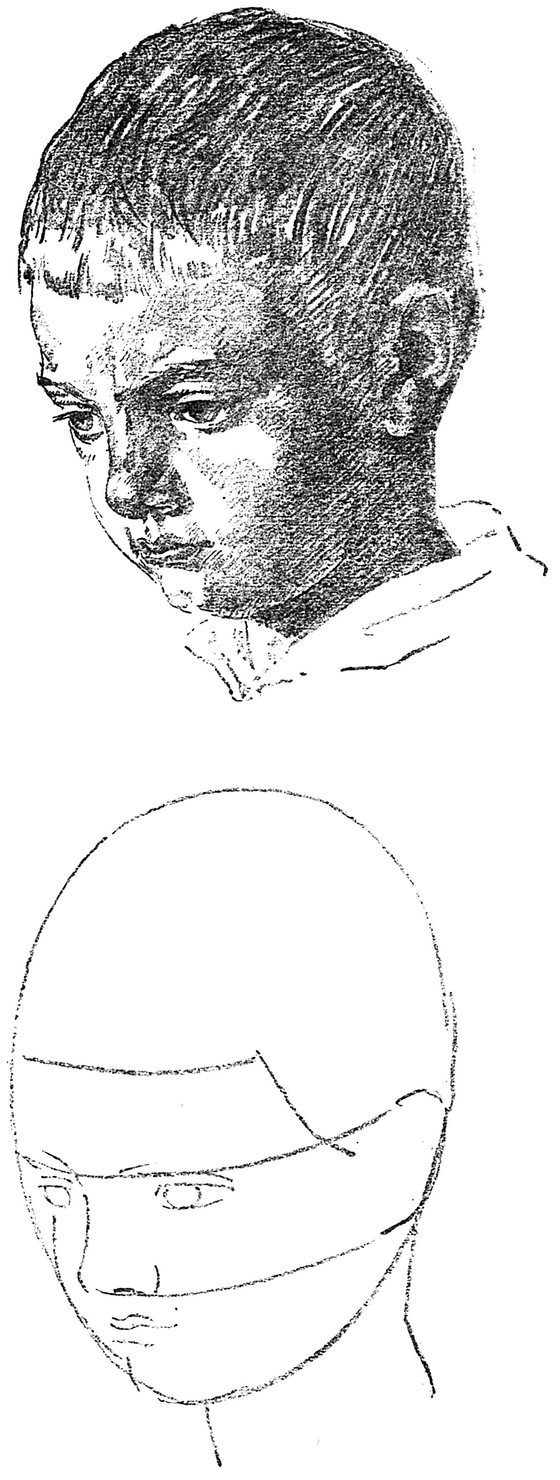
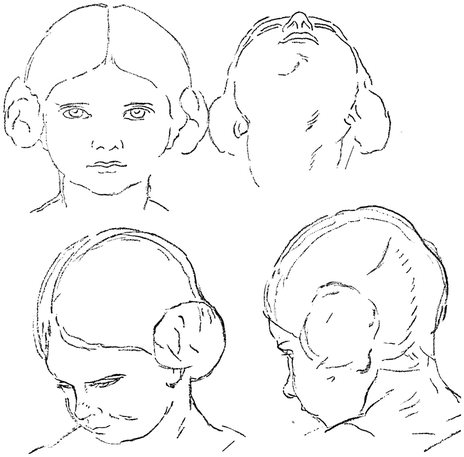
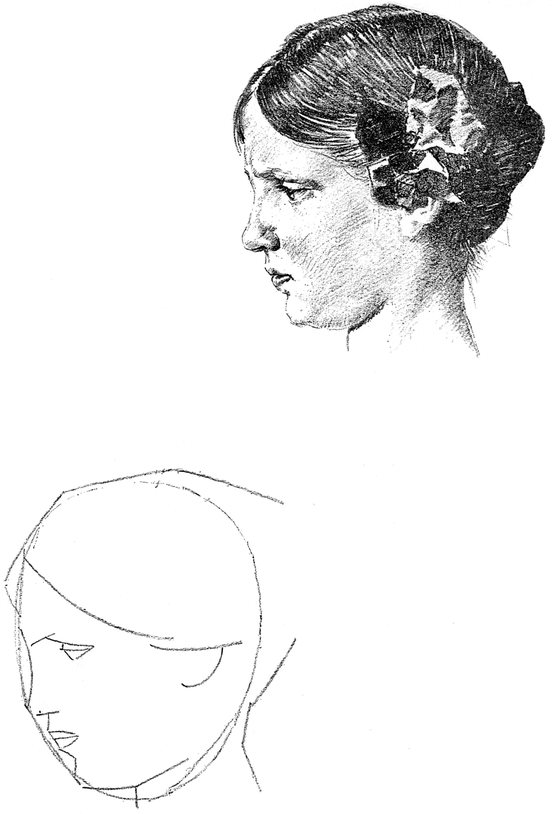
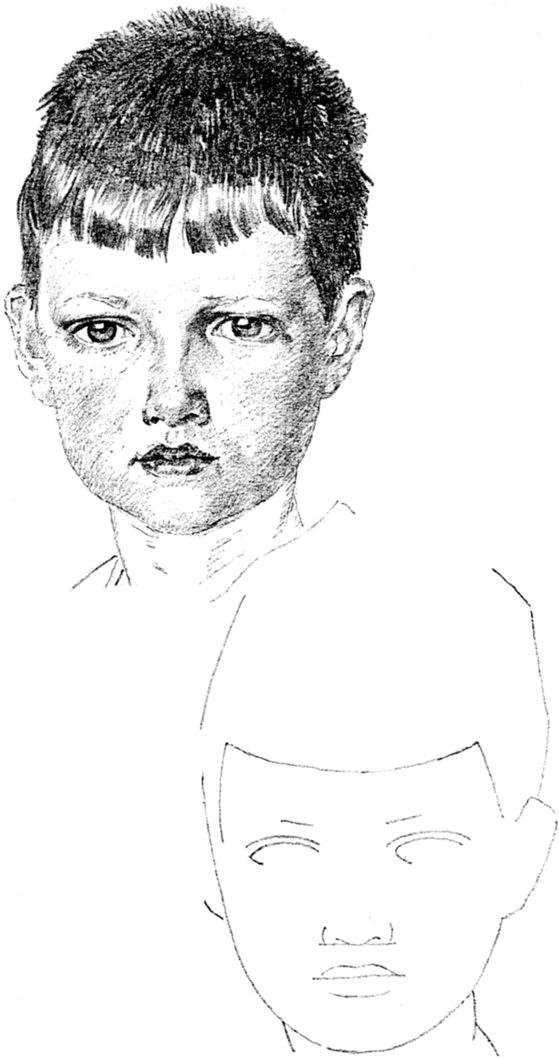
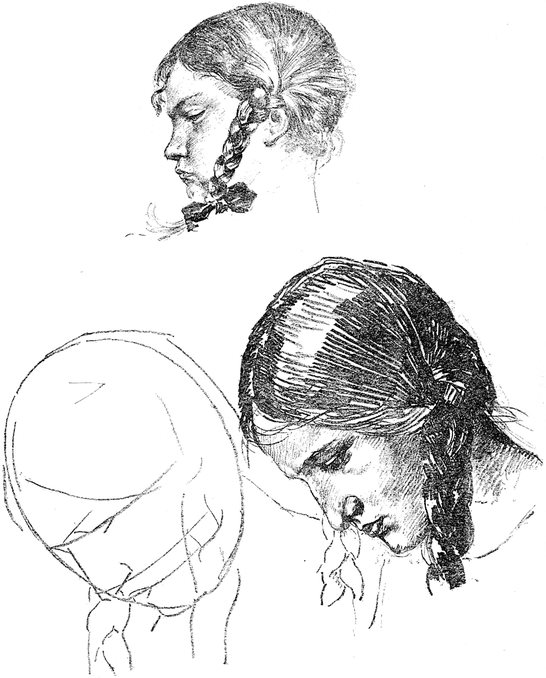
IN CONTRAST to the preceding drawings, that give the fullness and the roundness of childhood and of youth, we have a number of impressive character studies drawn with truthful severity marking the signs of advancing age. In old age the flesh falls away, the skin becomes wrinkled leaving the bones, tendons, and veins, more prominent. The bony structure of old age, as in youth, is determined by the upper and lower jaw bones. When the teeth fall out, the sockets which grow up along with them waste away; accordingly while the depth of the angle of the jaw is less, its length to the chin is the same, causing the angles of the lower jaw to protrude.

